Abstract
The effects of various cardiovascular drugs (prostaglandin E2 (PGE2), propranolol and nitroglycerine) and anaesthetic regimens (halothane, pethidine and pentobarbitone), upon the outcome of coronary artery ligation in acutely prepared rats were determined. Effects upon arrhythmias, blood pressure, heart rate, mortality, ECG and the size of the occluded zone were determined for each drug in the presence of each anaesthetic. PGE2 and nitroglycerine had no statistically significant effects on the outcome of ligation whatever the anaesthetic. Propranolol had limited antiarrhythmic actions. The anaesthetic used had major effects upon the outcome of ligation, regardless of the cardiovascular drugs administered. Pentobarbitone anaesthesia resulted in the highest mortality, and most arrhythmias. Pethidine-N2O anaesthesia was associated with fewer arrhythmias. Halothane-N2O anaesthesia markedly decreased the incidence and severity of arrhythmias, independent of the cardiovascular drug. It was concluded that the anaesthetic used can have a major influence on ligation-induced arrhythmias in acutely prepared anaesthetized rats.
Full text
PDF
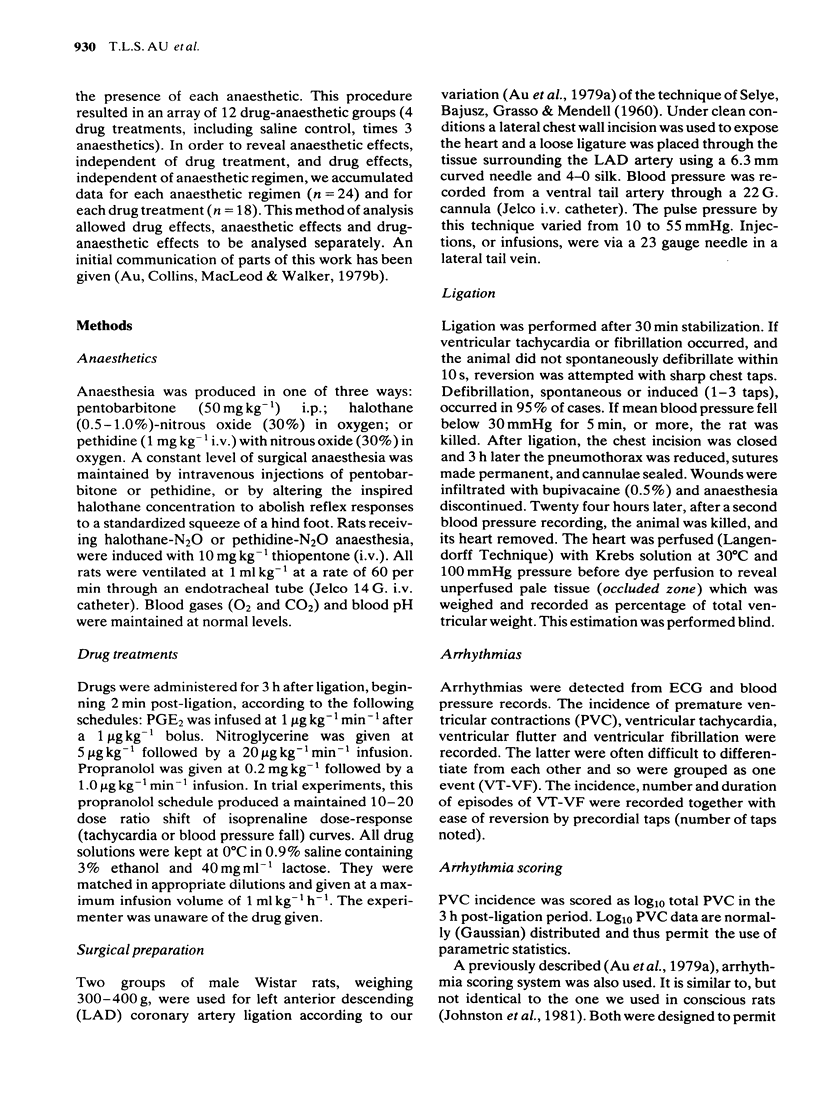
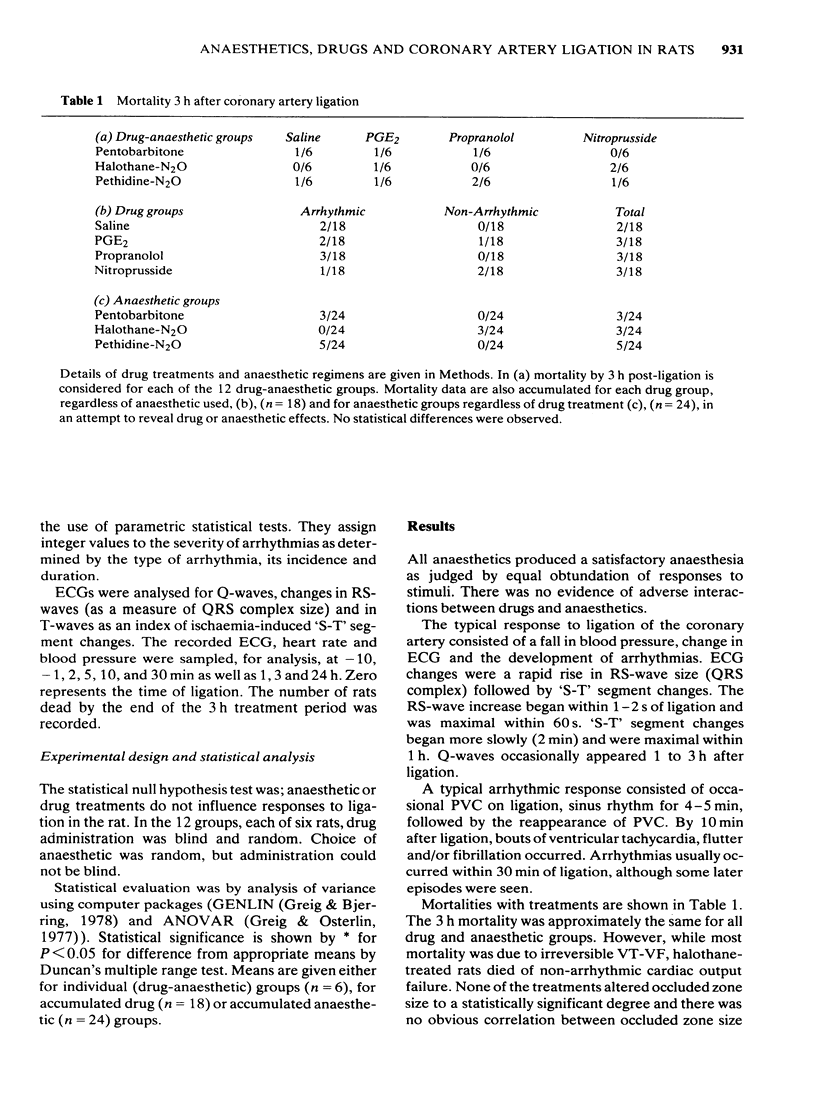
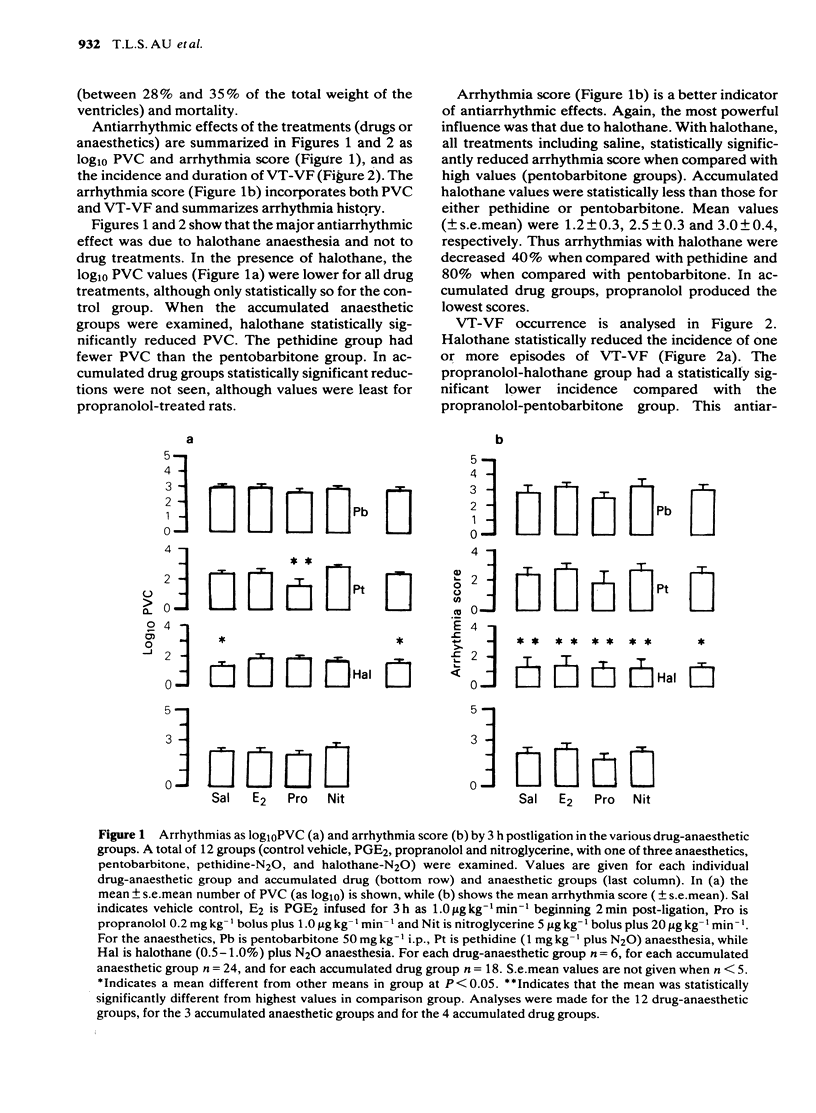
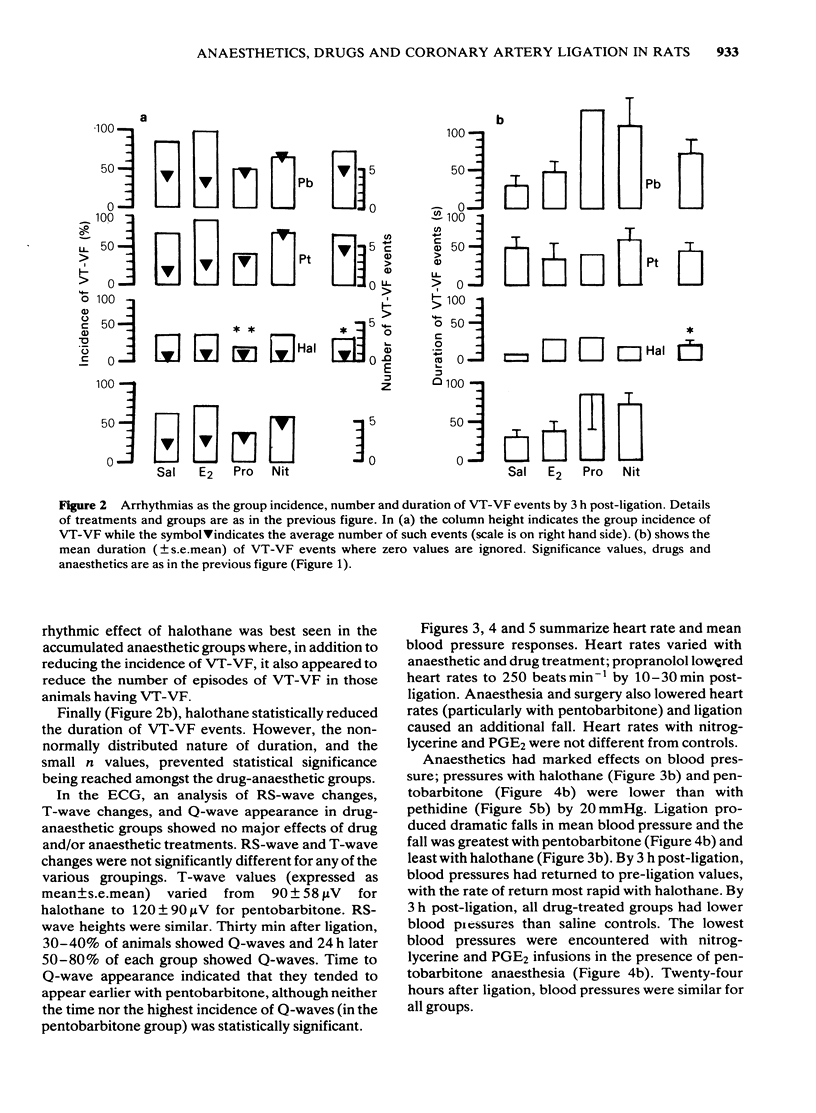
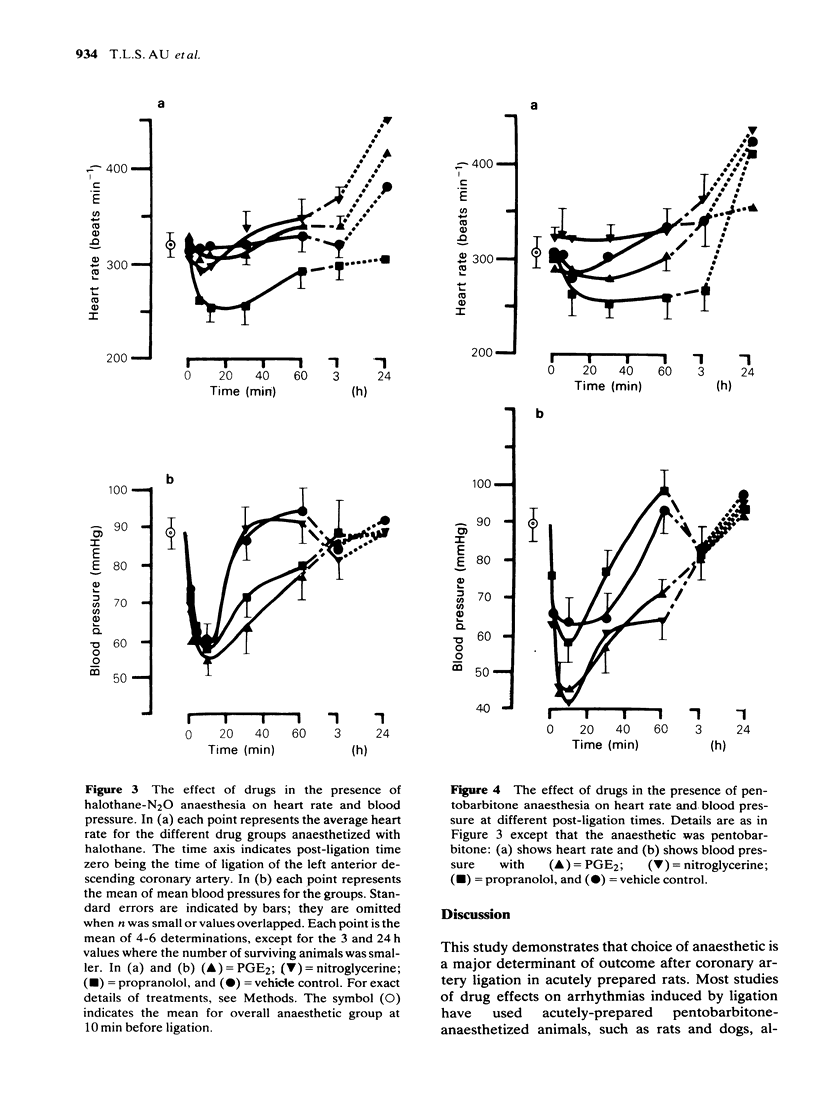
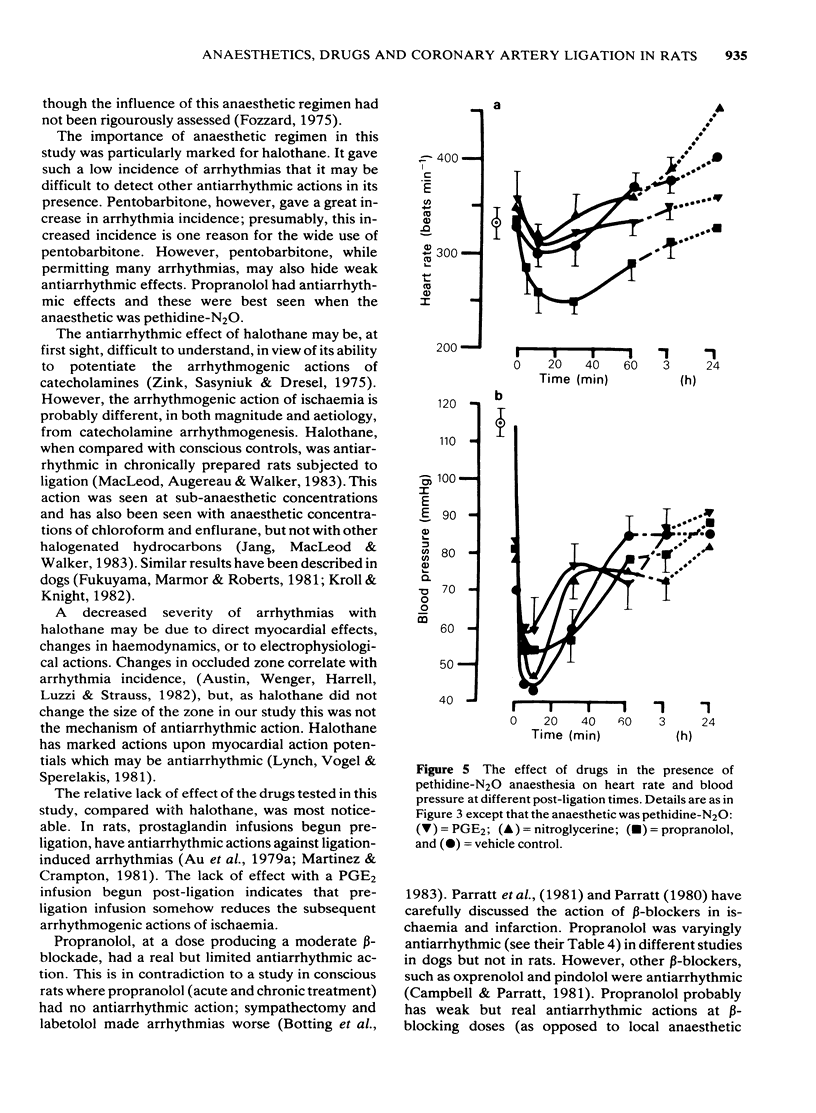
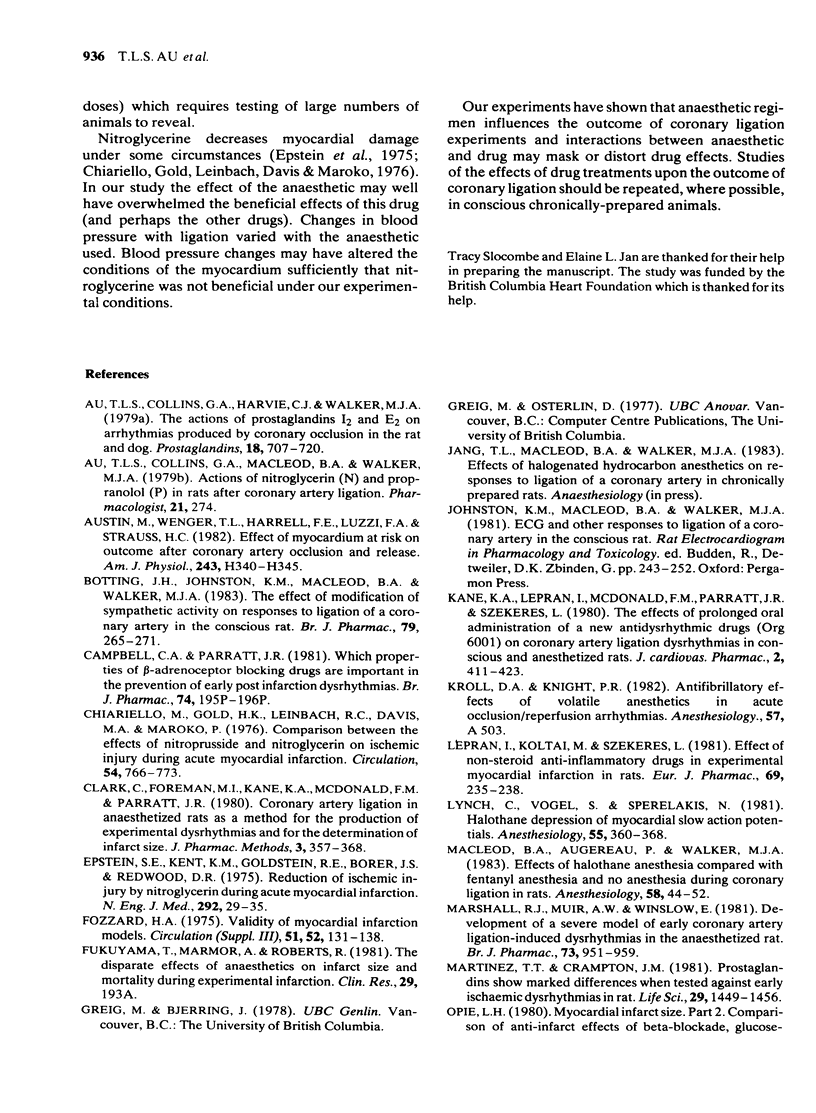
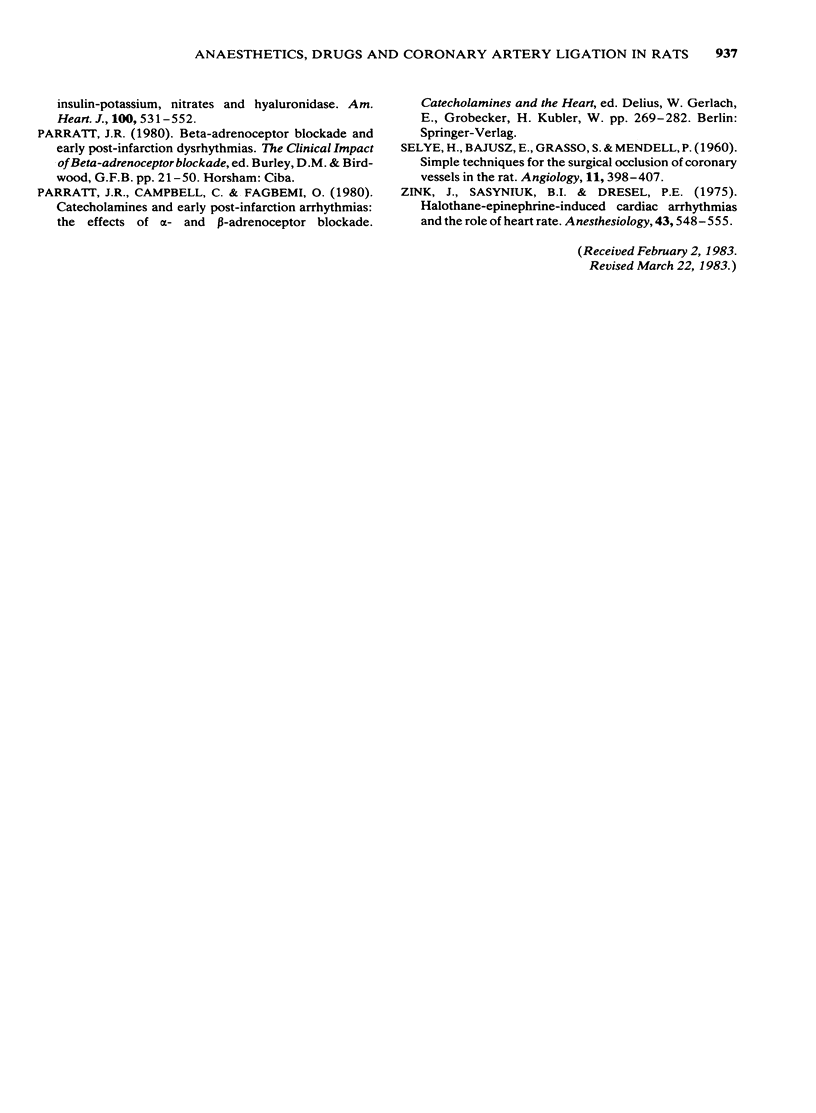
Selected References
These references are in PubMed. This may not be the complete list of references from this article.
- Au T. L., Collins G. A., Harvie C. J., Walker M. J. The actions of prostaglandins I2 and E2 on arrhythmias produced by coronary occlusion in the rat and dog. Prostaglandins. 1979 Nov;18(5):707–720. doi: 10.1016/0090-6980(79)90091-1. [DOI] [PubMed] [Google Scholar]
- Austin M., Wenger T. L., Harrell F. E., Jr, Luzzi F. A., Strauss H. C. Effect of myocardium at risk on outcome after coronary artery occlusion and release. Am J Physiol. 1982 Aug;243(2):H340–H345. doi: 10.1152/ajpheart.1982.243.2.H340. [DOI] [PubMed] [Google Scholar]
- Botting J. H., Johnston K. M., Macleod B. A., Walker M. J. The effect of modification of sympathetic activity on responses to ligation of a coronary artery in the conscious rat. Br J Pharmacol. 1983 May;79(1):265–271. doi: 10.1111/j.1476-5381.1983.tb10520.x. [DOI] [PMC free article] [PubMed] [Google Scholar]
- Chiariello M., Gold H. K., Leinbach R. C., Davis M. A., Maroko P. R. Comparison between the effects of nitroprusside and nitroglycerin on ischemic injury during acute myocardial infarction. Circulation. 1976 Nov;54(5):766–773. doi: 10.1161/01.cir.54.5.766. [DOI] [PubMed] [Google Scholar]
- Clark C., Foreman M. I., Kane K. A., McDonald F. M., Parratt J. R. Coronary artery ligation in anesthetized rats as a method for the production of experimental dysrhythmias and for the determination of infarct size. J Pharmacol Methods. 1980 Jun;3(4):357–368. doi: 10.1016/0160-5402(80)90077-7. [DOI] [PubMed] [Google Scholar]
- Epstein S. E., Kent K. M., Goldstein R. E., Borer J. S., Redwood D. R. Reduction of ischemic injury by nitroglycerin during acute myocardial infarction. N Engl J Med. 1975 Jan 2;292(1):29–35. doi: 10.1056/NEJM197501022920107. [DOI] [PubMed] [Google Scholar]
- Kane K. A., Leprán I., McDonald F. M., Parratt J. R., Szekeres L. The effects of prolonged oral administration of a new antidysrhythmic drug (Org 6001) on coronary artery ligation dysrhythmias in conscious and anesthetized rats. J Cardiovasc Pharmacol. 1980 Jul-Aug;2(4):411–423. doi: 10.1097/00005344-198007000-00008. [DOI] [PubMed] [Google Scholar]
- Leprán I., Koltai M., Szekeres L. Effect of non-steroid anti-inflammatory drugs in experimental myocardial infarction in rats. Eur J Pharmacol. 1981 Jan 16;69(2):235–238. doi: 10.1016/0014-2999(81)90422-2. [DOI] [PubMed] [Google Scholar]
- Lynch C., 3rd, Vogel S., Sperelakis N. Halothane depression of myocardial slow action potentials. Anesthesiology. 1981 Oct;55(4):360–368. doi: 10.1097/00000542-198110000-00005. [DOI] [PubMed] [Google Scholar]
- MacLeod B. A., Augereau P., Walker M. J. Effects of halothane anesthesia compared with fentanyl anesthesia and no anesthesia during coronary ligation in rats. Anesthesiology. 1983 Jan;58(1):44–52. doi: 10.1097/00000542-198301000-00008. [DOI] [PubMed] [Google Scholar]
- Marshall R. J., Muir A. W., Winslow E. Development of a severe model of early coronary artery ligation-induced dysrhythmias in the anaesthetized rat. Br J Pharmacol. 1981 Aug;73(4):951–959. doi: 10.1111/j.1476-5381.1981.tb08750.x. [DOI] [PMC free article] [PubMed] [Google Scholar]
- Martinez T. T., Crampton J. M. Prostaglandins show marked differences when tested against early ischemic dysrhythmias in rat. Life Sci. 1981 Oct 5;29(14):1449–1456. doi: 10.1016/0024-3205(81)90009-6. [DOI] [PubMed] [Google Scholar]
- Opie L. H. Myocardial infarct size. Part 2. Comparison of anti-infarct effects of beta-blockade, glucose-insulin-potassium, nitrates, and hyaluronidase. Am Heart J. 1980 Oct;100(4):531–552. doi: 10.1016/0002-8703(80)90669-9. [DOI] [PubMed] [Google Scholar]
- SELYE H., BAJUSZ E., GRASSO S., MENDELL P. Simple techniques for the surgical occlusion of coronary vessels in the rat. Angiology. 1960 Oct;11:398–407. doi: 10.1177/000331976001100505. [DOI] [PubMed] [Google Scholar]
- Zink J., Sasyniuk B. I., Dresel P. E. Halothane-epinephrine-induced cardiac arrhythmias and the role of heart rate. Anesthesiology. 1975 Nov;43(5):548–555. doi: 10.1097/00000542-197511000-00012. [DOI] [PubMed] [Google Scholar]


